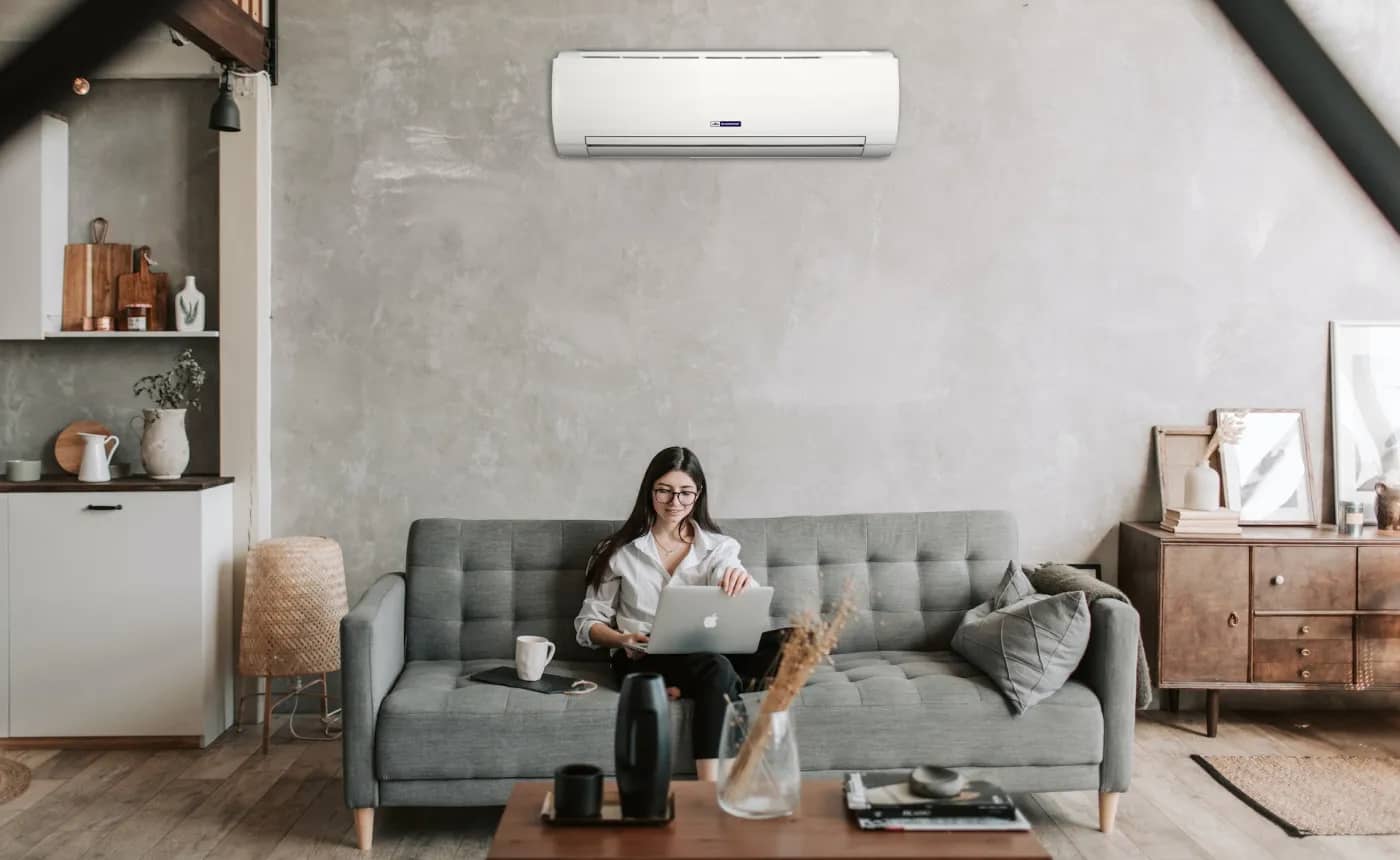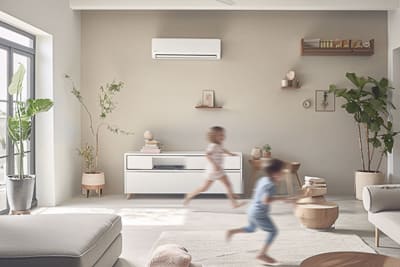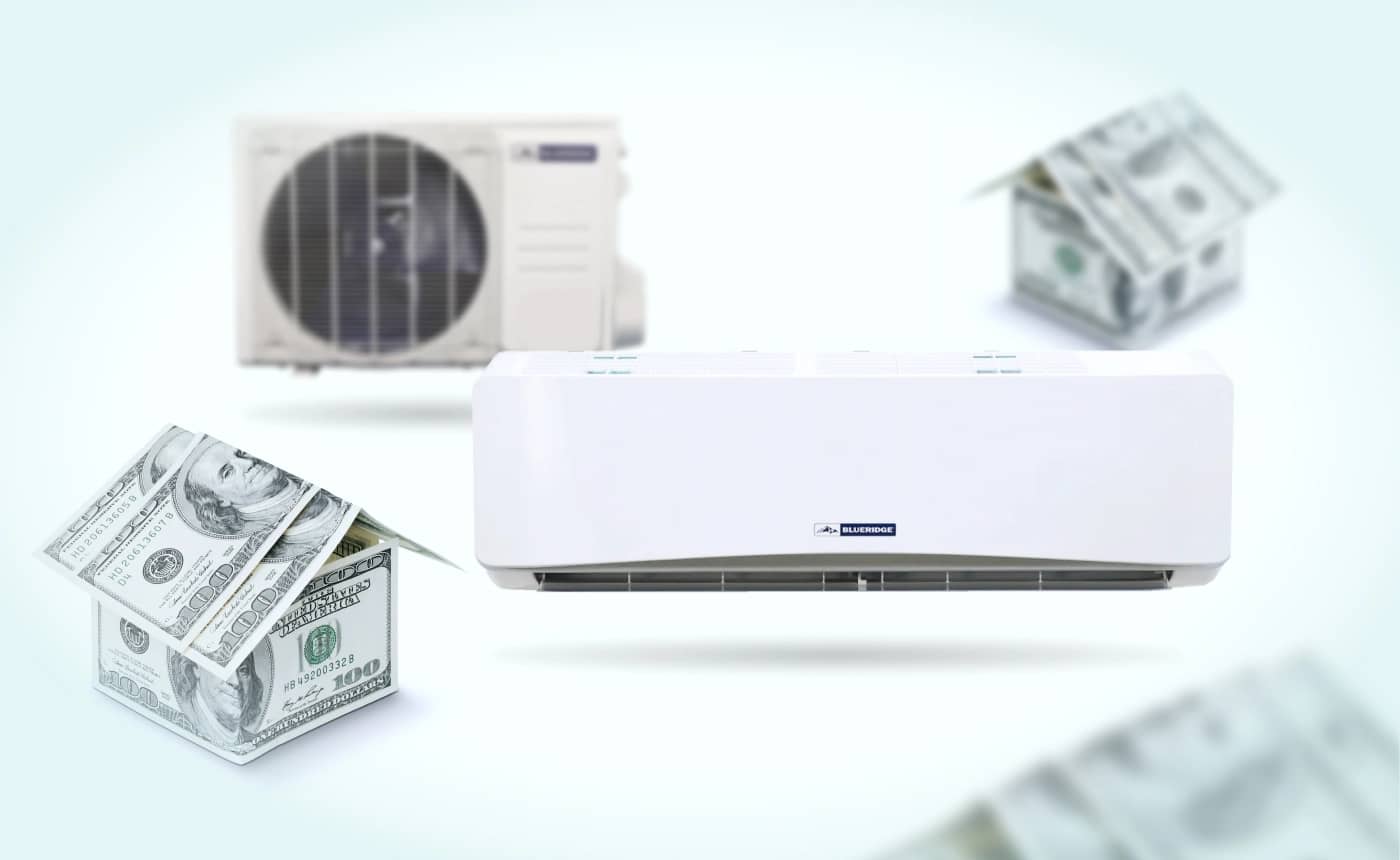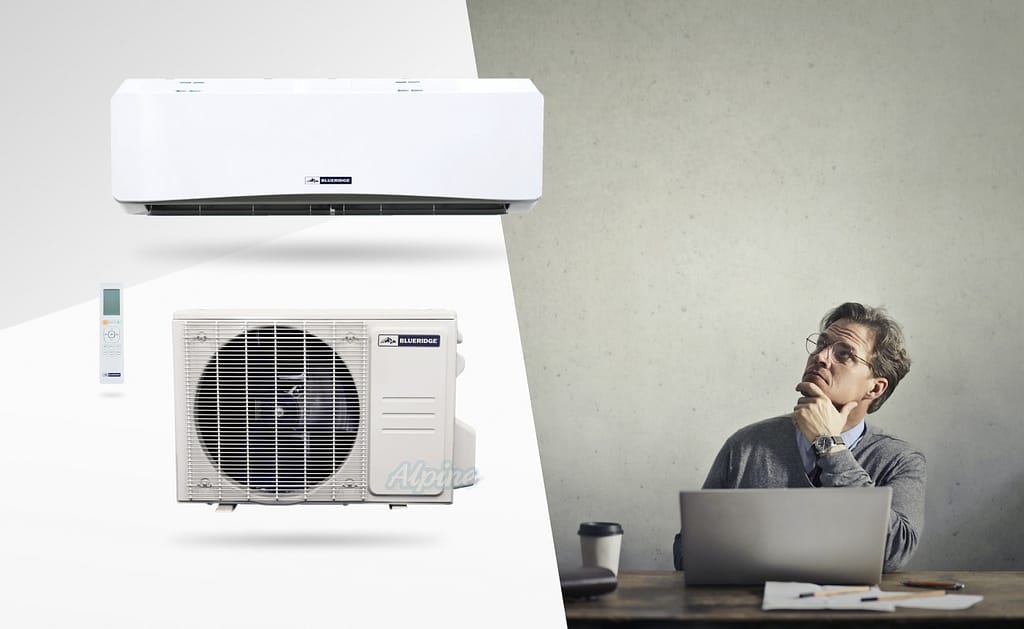
Have you been considering jumping on the ductless mini-split system bandwagon?
Are you strongly considering investing in one of these highly regarded heating and cooling systems for your home or office space?
Before you do, it’s crucial to ensure that a ductless mini-split system is truly right for you.
KEY TAKEAWAYS
- Mini split systems are proven standouts in the HVAC field for their exceptional energy efficiency, reduced energy consumption, and lower utility bills.
- A ductless mini-split system may not be for everyone, and certain factors may even make them a bad fit for homes, offices, or other spaces.
- Educating yourself on some of the drawbacks of the mini-split system will ensure you make the right decision for you.
Though many HVAC experts, homeowners, and environmental organizations have embraced ductless mini-split systems as much-improved heating and cooling systems, there are still some instances where a mini-split may not suit you.
Making sure you understand how a mini-split works and the potential downsides will be essential before making a final decision.

What is the Difference Between a Ductless Mini Split System and My Current Home’s Central Air Conditioning System?
While both central air conditioning systems and ductless mini splits are used for the cooling and heating needs of many different spaces, they differ significantly in how they deliver and maintain that hot and cool air.
The primary distinction between a ductless mini-split system and your home’s current central air conditioning system is how they deliver conditioned air

While central air systems utilize ducts to distribute air throughout your home, ductless mini-splits operate without ductwork.
A mini-split system only requires two main components: an outdoor unit and an indoor unit.
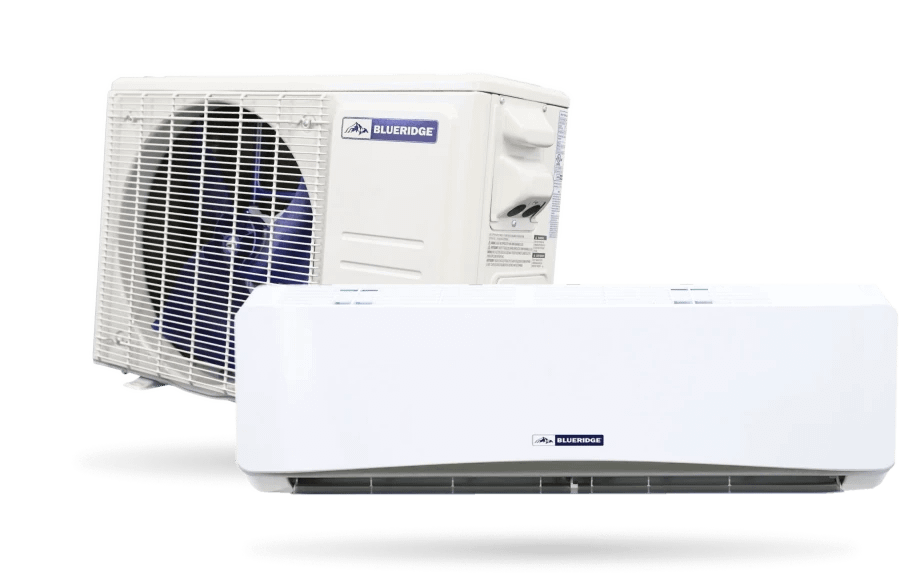
The outdoor unit houses the compressor and condenser components responsible for releasing or extracting heat from the air.
The indoor unit contains the evaporator and blower fan. More than one indoor unit (also called indoor air handlers) often serves larger areas or zones where you sometimes want different temperatures throughout the entire space.
The indoor and outdoor units connect through a refrigerant line set, which transfers the refrigerant to facilitate heat exchange. This setup allows the mini split system to provide both cooling and heating functions without requiring ductwork throughout the entire house or building.
The absence of ductwork makes mini splits highly adaptable and suitable for various spaces, providing targeted comfort without the energy losses associated with traditional HVAC systems.
What are the Drawbacks of Installing Mini Split Air Conditioners in a Home or Office?
Understanding the difference between a traditional HVAC system and a mini-split system will also help you understand why – in certain instances – a ductless mini-split AC may not be the best choice for you.

Drawback #1: Mini Splits are Limited When it Comes to Whole-Home Coverage
While mini-split systems offer remarkable advantages, one drawback for some may be their zone-specific approach to heating and cooling rather than centralized whole-home coverage.
These systems excel at delivering personalized comfort to individual zones or rooms, allowing occupants to set different temperatures according to their preferences.
However, achieving uniform heating or cooling across a large home or a building with a complex layout might require installing multiple indoor units.
While this can be an effective solution, it could also lead to higher upfront costs due to the need for additional units and more extensive installation work.

Despite this drawback, the ability to customize comfort in various zones remains a key benefit of mini-split systems. Still, you should talk with an expert before you decide if a mini-split has the heating and cooling capacity significant enough for your space.

Drawback #2: Ductless Mini Split Systems Can Have Higher Upfront Costs
One significant drawback of mini-split systems is the potentially higher upfront cost than upgrading an existing central air HVAC system or opting for a quick-fix solution like a window air conditioner or space heater.
While the best mini split systems offer numerous advantages, including energy efficiency and zoning capabilities, their initial expenses could concern some homeowners.

The cost of each indoor unit, installation, and professional services can add up, leading to a higher initial investment than what might be required to upgrade or modify an existing central air conditioning system.
Window AC units can work in a pinch, and space heaters provide an inexpensive and portable alternative for the winter chill. Over time, these affordable but temporary solutions will undoubtedly disappoint as they have limited coverage and can pose safety issues.
While the long-term energy savings and improved efficiency may offset these upfront expenses over time, the immediate cost could be a consideration, particularly for those on tighter budgets.
That said, it’s important to remember that the upfront costs of a mini-split system can vary quite a bit.
From the number of indoor units required, the complexity of the installation, and the specific brand and model chosen, many interested homeowners may find flexibility in the initial cost of purchasing and installing a ductless mini-split system.
There are also some excellent government incentives and tax credits for individuals who invest in this energy-efficient heating and cooling system.
Be sure you check sites like energystar.gov for such tax credits and incentives. You can also use Alpine Air’s Operating Cost Calculator to learn more about the difference between owning and operating a ductless mini split versus a traditional central air conditioning system.

Drawback #3: Some Think that Mini Split Indoor Units are Aesthetically Unappealing
One aspect where mini-split systems pose a challenge for some people is their aesthetics.
Although mini splits come in a variety of modern and sleek designs, sometimes the placement of the indoor air-handling unit can clash with certain interior designs. And while mini split manufacturers continue to create discreet and visually appealing air handlers, some homeowners may still find it challenging to integrate them seamlessly into their existing interior decor.
One way to solve this issue is to find ways to hide or block your indoor units, being careful not to damage the air handler or prevent proper indoor airflow throughout the space.
From integrating indoor air handlers into custom-made cabinetry to placing them behind decorative screens, there are many ways to take the visual focus away from your mini split’s air-handling unit and still ensure it can do its job effectively.
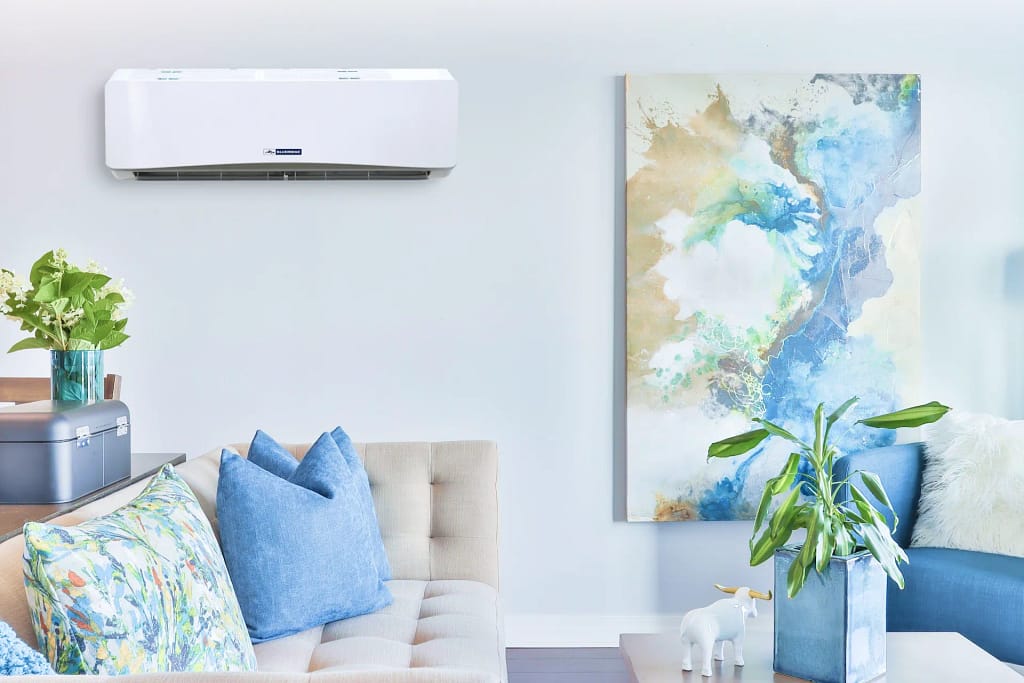
Ultimately, balancing the practical benefits of mini-split systems and their visual impact in a space will be essential in deciding if they are the right choice for your home’s comfort and design preferences.


Drawback #4: Installing Mini Splits Can Sometimes Be Expensive
One potential drawback of mini-split systems is the sometimes surprising installation cost.
This is most likely to happen when an individual purchases a mini split with the plan to install it themselves but later realizes they need professional help to ensure it has been installed correctly.

Another example is when a homeowner can do the installation themselves but has yet to budget for electrical help (which is often needed even if you are an expert DIY-er.)
While some homeowners might be comfortable with DIY projects, installing a mini-split system can require technical aspects that demand expertise and knowledge some of us may not possess.
Though a DIY mini-split installation is commonly straightforward (and much simpler than putting in ductwork for a central HVAC system), you should still be prepared and realistic about installation expenses before you begin.
An excellent place to start is with Alpine’s step-by-step guide installation guide. This will give you a good overview of what you can expect and where you may need to call in outside forces for help.

Drawback #5: Ductless Mini Split Systems Require Regular Maintenance
Like any HVAC system, regular maintenance is necessary for owning a mini-split system.
While these systems are designed for durability and efficiency, neglecting maintenance can lead to performance issues, reduced efficiency, and even potential breakdowns over time.
Maintenance for mini-split systems typically involves a few essential tasks that homeowners can perform themselves. Regularly cleaning or replacing the air filters is crucial to maintaining good indoor air quality and ensuring efficient airflow.
Additionally, cleaning dust and debris away from outdoor and indoor units helps prevent airflow obstructions and maintains the system’s cooling and heating capacity.
While homeowners can handle some maintenance tasks, professional servicing may still be needed occasionally.
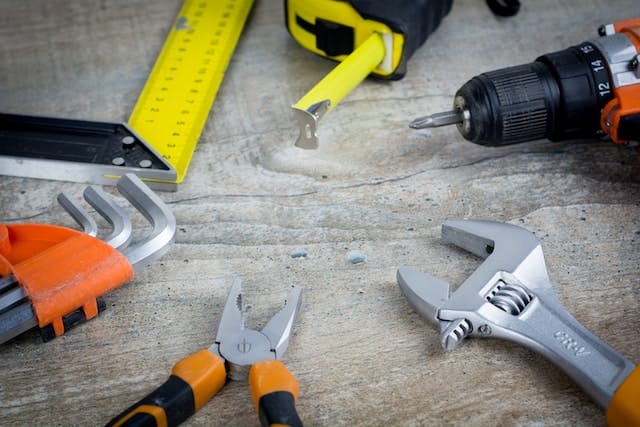
Professional HVAC technicians have the expertise to inspect and clean the internal components of your mini-split system, ensuring that it operates at its peak efficiency. They can also identify any potential issues early on and address them before they escalate into costly repairs.
For homeowners seeking hassle-free operation and optimal comfort, a mini-split system will not disappoint. That said, do not assume that these systems won’t still need regular maintenance and TLC throughout their lifetime.
Alpine Home Air: Your Partner in All Your HVAC Needs
With over 20 years in the HVAC business, Alpine Home Air Products is a trusted partner and industry leader in providing top-notch solutions for all your HVAC needs.
Our expert team boasts a wealth of experience and expertise in the HVAC industry, setting us apart as a reliable and knowledgeable partner for all your heating and cooling needs.

With a deep company-wide commitment to customer support and satisfaction that is truly unrivaled, Alpine goes above and beyond to ensure that you receive the best possible service and solutions.
When it comes to mini-split systems, Alpine Air can help you navigate our wide variety of options that combine energy efficiency, innovative technology, and reliable performance.
Whether you’re looking for a single-zone or multi-zone solution – or still need help deciding! – reach out to us today and let us help you get started toward a more comfortable and cost-effective heating and cooling lifestyle.

